
Hello everyone!
Today’s topics are: Remembering Dany Ray; On the palm replacement (5 methods); The missing link (“Hand Tricks”).
These are The Magic Memories 143, gone online Sunday, September 24th, 2023, at 0:07h sharp.
All The Magic Memories from 2021, 2022, including the Magic Advent Calendar from 2020, can be found HERE.
I’m back from my trip to Paris, then Juan Tamariz’s home in Cadiz, and finally the convention in Vitoria, Magialdia, in the Basque country, with only a few days to prepare for my travel to the International Close-up Symposium in Wiener Neustadt, near Vienna, Austria, and then the French convention in La Grande-Motte, in the South of France.
Thanks to the “schedule” feature of WordPress I was able to pre-write the texts below, and hope you’ll enjoy them.
However, I look very much forward to be back for The Magic Memories 146 on October 15th, where I shall tell you first-hand of all my adventures, a lot, for sure 🙂

Remembering Dany Ray II
I have paid tribute to French magician Dany Ray (1921 – 1989), whose real name was Raymond Dagnaud, in The Magic Memories 06 of February 6th, 2021 BC (Before Corona), where I also provided a link to a video of his cabaret act he performed in several languages in some of the best night clubs of the time.
For another video of him doing first the Chinese Sticks, and then the Multiplying Bottles, CLICK HERE. Even if you don’t understand French, please look at how he handles the Chinese Sticks, as it is a masterly lesson in how to use small apparatus. The only other person I’ve seen handle them in such a natural way is Fred Kaps (1926 – 1980) – see Fred Kaps doing the Chinese Sticks HERE.
I met Dany Ray about 40 years ago when he worked the then well-known Clara Night Club here in Basel, Switzerland. Afterwards we went for a drink and stayed up late into the night doing magic. He could do a lot of Marlo’s stuff and was quite good with cards and other close-up.
He was a good friend of Ted Lesley, whom I also knew personally, and who told me many things about Dany Ray that you cannot find anywhere else.
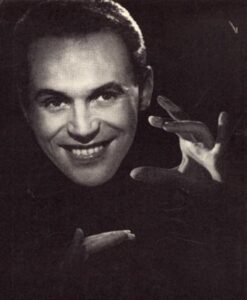
For a short time I used to do a trick Ted told me Dany was doing: A regulation deck is shuffled by several spectators and is then assembled. One of the spectators keeps a packet of ca. a dozen cards, you take the balance of the deck, cut it into four packets, and then distribute these pats in four of your pockets (trousers and jacket).
You now ask various spectators, one after the other, to call out cards. When the first spectator calls out e.g., the Jack of Hearts, you first tell them in which pocket it is, or if the spectator is holding it in his packet – that’s the first effect. Then you take the named card out of the respective packet and pocket, or have the spectator, who is holding the cards, take it out and show it. That’s the second effect.
This is repeated with four or five cards.
Occasionally someone would call out, «Joker!» Then Dany would ask, «The small or the big one?» If small was said, he would take out a miniature Joker, if big, a Jumbo Joker, as a gag.
As a finale he would call off the cards the spectator was holding. Eventually the deck was completed by taking the packets from the pockets. I remember I used this for a deck switch, of course (!), but found it difficult to follow this trick with a better one!
I probably added more refinements than were in Dany’s original handling, but I stopped doing the whole thing because it was just a bit more hassle than I allow myself to go into (I’m a minimalist and envy people who go to great lengths and effort to obtain excellent results).
Anyway, this is a hell of a trick that works in formal close-up, parlor, and even on a fairly large stage.
You have all the information to try to come up with a practical method… ok, maybe I forgot to tell you one thing: At the beginning the deck – complete and ungimmicked! – is handed out for shuffling to several spectators, and the same strategy is applied as in “Card Call” (Stand-up Card Magic). At the end, when you take out the remaining cards from your four pockets, the deck is again complete and ungimmicked, and you could give it away. (Little extra-help: In my trousers I was using double-pockets, a ploy I recommend you use in any pair of trousers).
Should you come up with a good method and presentation, and publish it, please don’t forget to credit Dany Ray, Ted Lesley, and myself 🙂
On the Palm Replacement (5 methods)
The replacement of palmed cards is the last phase of Palming (see Card College 2, p. 271 and p. 285).
As always it is advantageous to have recourse to different techniques to fit specific situations, as there simply is no technqiue that can solve every problem in every situation, as little as there is one tool in a tool box that can be applied to every task, or as Maslow put it: “If you have only a hammer in your toolbox, you’ll see every problem as a nail.”
Following are five Replacements for palmed cards from my extensive archive on the subject that I have not discussed in any of my publications, if memory serves me right…
This, This or That Replacement (Green)
This was told to me by Lennart Green in the course of a session we had at my home in January 2009; Lennart said an unnamed friend of his showed him, and if anyone knows who this friend is, after reading this, please let me know.
The cards are palmed in the right hand, and the deck is held in Dealing Position in the other and. Ask the spectator, “Shall I do this…” slap the top of the deck with the flat right hand, replacing the cards, “…or this…”, make a fist and hit the top of the deck, “…or that!” Snap the fingers over the deck.
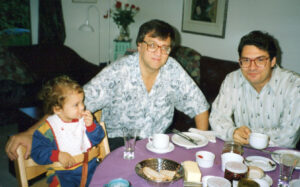
Cut From Tenkai
This was shown to me in 1985 (!) by my friend Jon Tgetgel, but it also looks very much like Ed Marlo could have fathered this – maybe someone knows and can let me know.
The cards to be replaced are in Tenkai Palm (they can be brought there from Classic Palm or Flat Palm or Clip Palm as soon as the hand rests on the table top or at the edge of the table).
The deck is either on the table or better in Dealing Position. The right hand cuts the top portion forward to the table, and in the process the palmed card are replaced on top of the lower portion. Immediately complete the cut and square up.
Oops Cut Replacement
The cards to be replaced are palmed in the right hand. The spectator has just shuffled and cut the deck and placed it on the table. Look at the deck as your right hand seizes it with the intention of picking it up. As soon as your right hand secures the deck in End Grip, your gaze shifts to the left. As the deck is lifted up, a few cards from its bottom are left on the table. As you place the deck into Dealing Position, turn your gaze to the right, spotting the cards on the table. Cross the right hand and the gaze, i.e., you look back to the left as your right hand moves toward the tabled packet, picking up the leftover cards, thereby replacing the palmed cards on top of the tabled packet – depending in the surface of the table this pick-up is a sweep-up. Smoothly uncross gaze and hand, looking to the right as the right hand moves to the left, replacing the cards just picked up on top of the balance and then squaring the deck to complete the Punctuation. So, the Handling Gestalt is that you pick up the deck, but accidentally a few escaped your grasp, so you go back, grab the left-backs, and then put them back on the remainder of the deck, thus completing it. The whole is done with a double crossing of the gaze, this being an application of the Slydini/Tamariz “Double Crossing the Gaze”.
Obviously, when you turn your gaze, there should be an unspoken reason for doing so. A simple one is to say something to a spectator on your right (right hand goes for deck), turn left as you say something to another spectator to your left (right hand picks up deck and leaves a few cards on the table), and then again say something to the spectator yon your right (right hand replaces cards on top of balance). As the deck is squared look at all and say something final (Good, Thank you… the deck has been shuffled… and the cards are in a haphazard order.)
My note says that Juan Tamariz showed me this in April 1996.
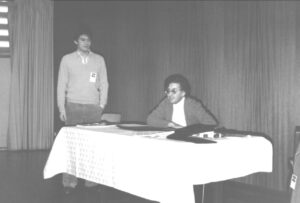
Overhand Shuffle Replacement (Dr. Jacob Daley)
The right hand has cards palmed and takes the deck in End Grip. Immediately the deck is brought to Overhand Shuffle Position, with the faces to the left, i.e., toward the audience, and in the process the palmed cards are almost automatically added to the top of the deck. Middle finger and ring finger of the left hand may assist by extending very slightly and catching the palmed cards at their right side and pulling them on top of the deck as the deck is brought into a vertical position for the shuffle.
The right hand can either approach the deck and immediately start with the shuffle, thereby replacing the cards, or the right hand can take the deck in End Grip, in order to free the left hand, which now moves something on the table. When the left hand is brought back to the deck, the Overhand Shuffle is started and the replacement effected.
When the shuffle is almost finished, the last packet is dropped behind the cards shuffled off, so that the replaced cards eventually land on top of the deck. Or use the Injog Shuffle retaining bottom stock and a second shuffle.
The best ploy, though, is to add the cards in a first Overhand Shuffle, as explained above, and when the last few cards are reached, throw them on the face of the alreada shuffled-off face up cards, but injogged. Smoothly flip the decl face down into Dealing Position, reataining the injogged configuration of the cards. Now simply do a multiple cut to the table, cutting above the Injog on the last cut; this will elegantly bring the replaced stock on top of the deck, which now innocently rests face down on the table . This latter handling is an “Intelligent Movement” (Sharing Secrets, “Intelligent Movements”, p. 54).
(see The Daley Notebooks, Note 236)
Applause, Applause
The cards to be replaced are palmed in the right hand. After the spectator has counted some cards on your left hand, look at the spectator and then into the audience, saying, “Thank you! Let’s give her a nice round of applause.” To illustrate tap the cards in your left hand in an applause gesture with the right hand, thereby replacing the cards.
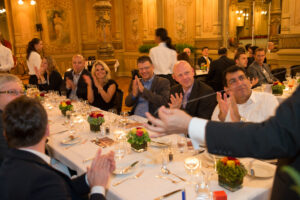
The Missing Link
Although you’ll mostly see very simple stunts directed at a lay audience, I admit I did not know some of them – maybe you will have the same experience. Remember that in Secret Agenda there is already a very good three-part routine using merely your ten fingers. If you can add just one more from this video it is well worth watching it.
To enjoy the video CLICK HERE.
«The greatest thing in life is to take the insignificant and make it significant, the common and make it uncommon. Simplicity is greatness…»(The Diebox, Vol. 1 No. 4, OCT 1933)
Wish you all an excellent week!
Roberto Giobbi
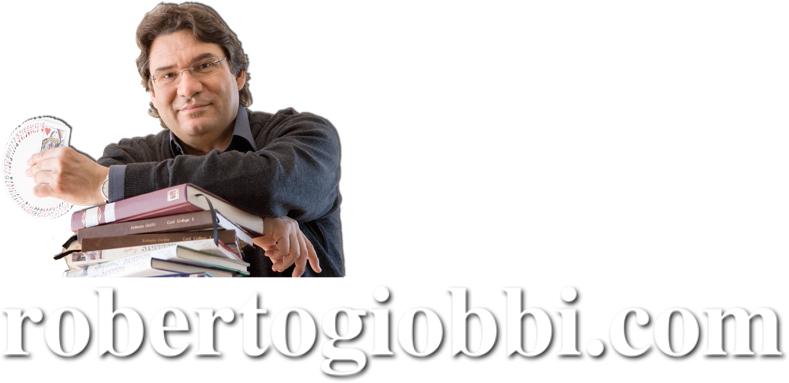
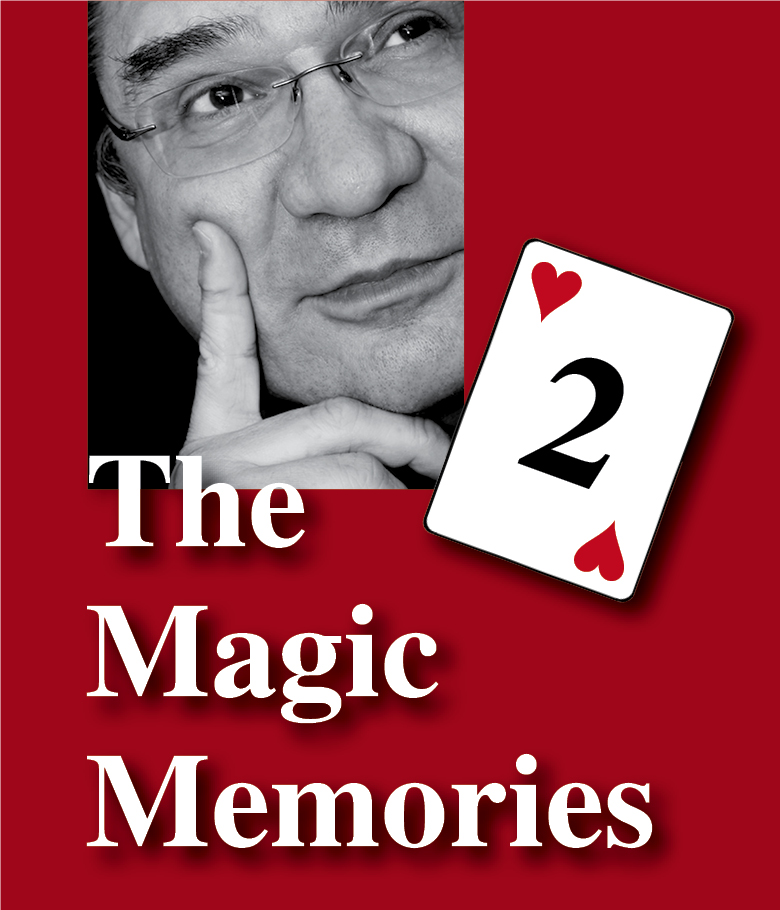
Un grand merci pour ces lectures hebdomadaires